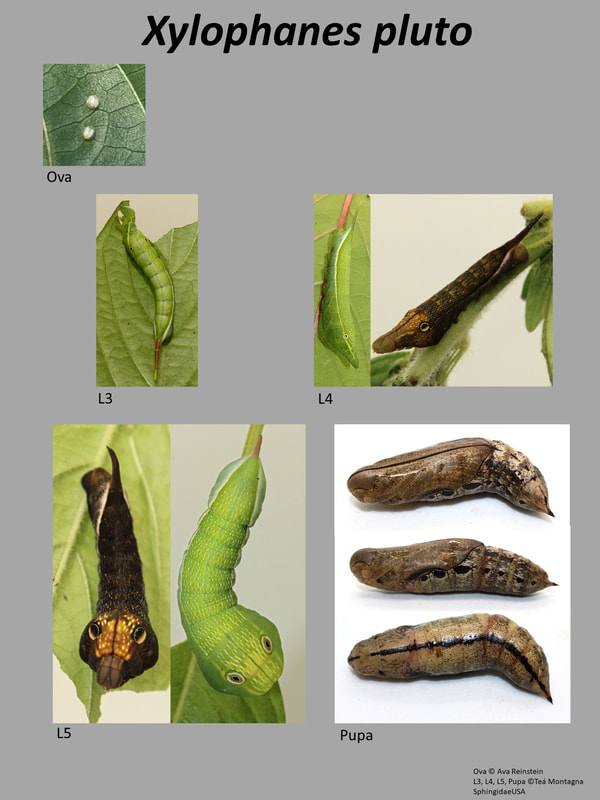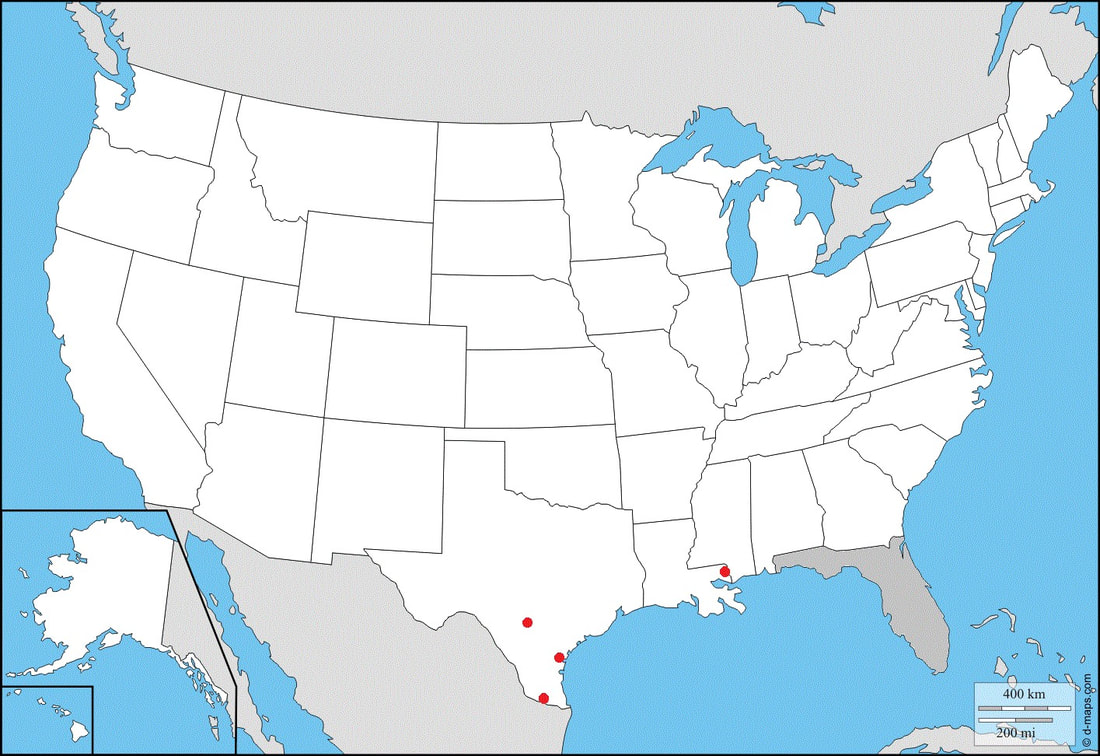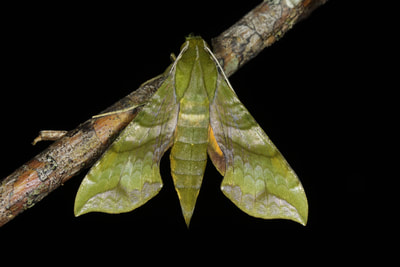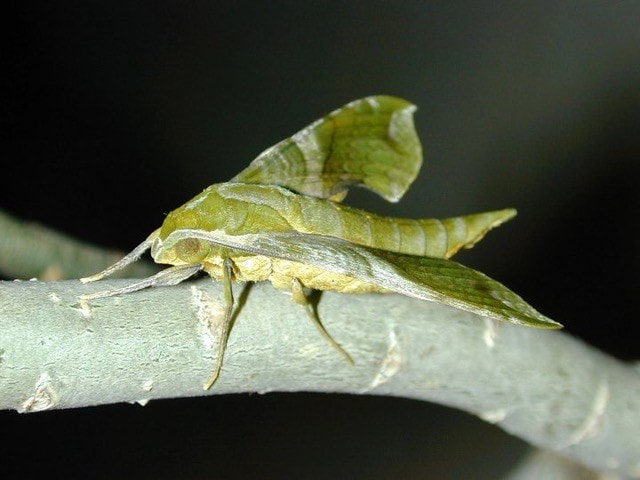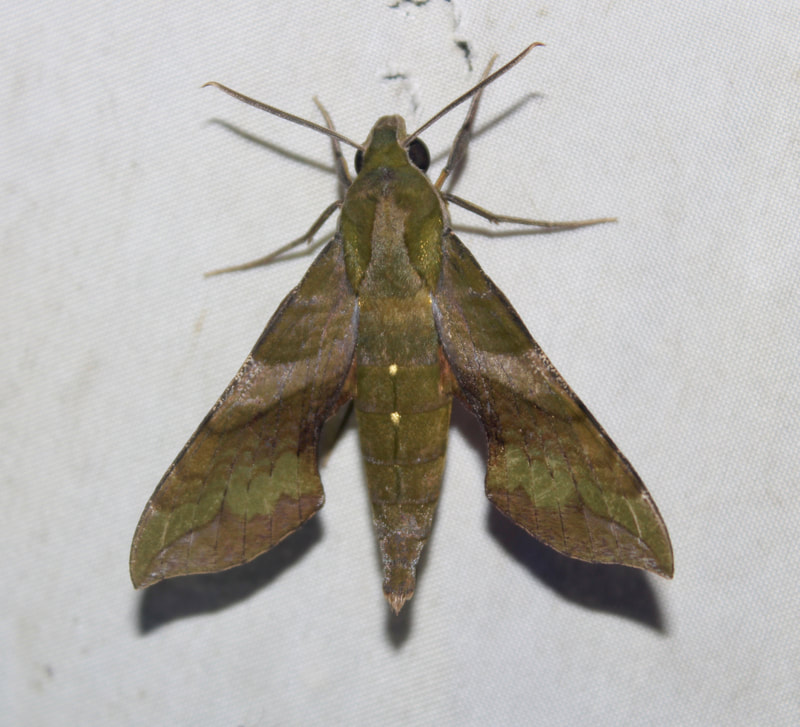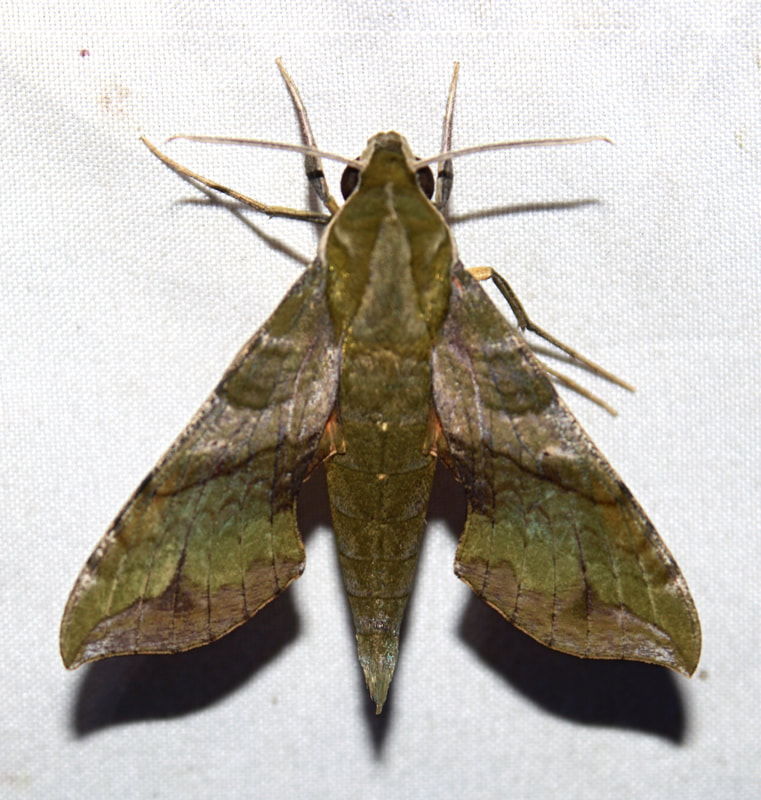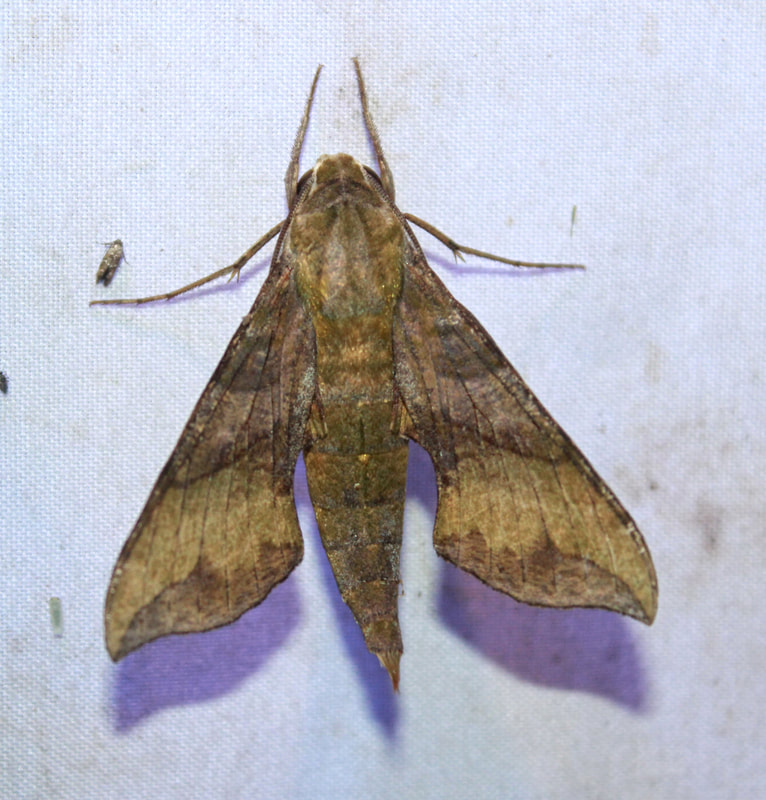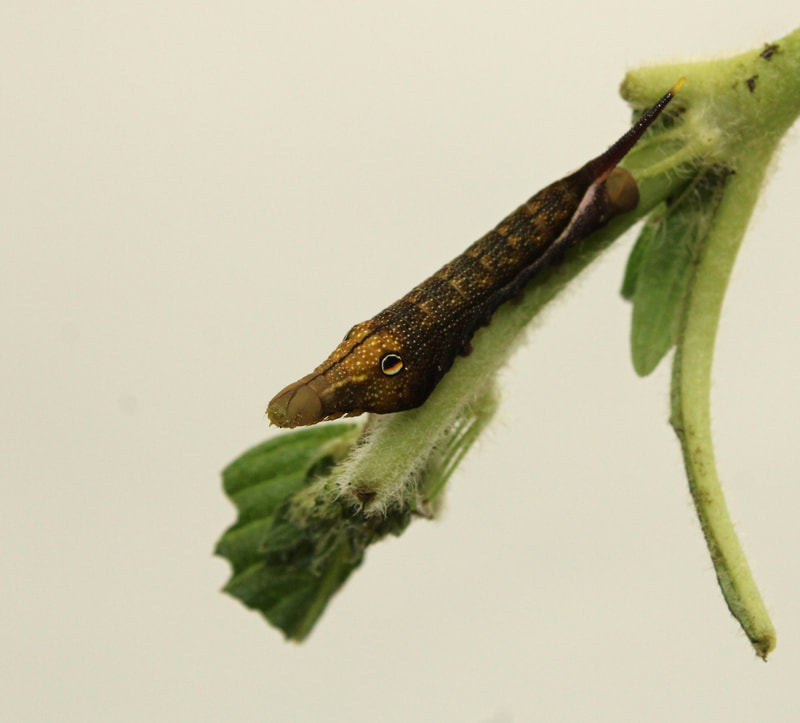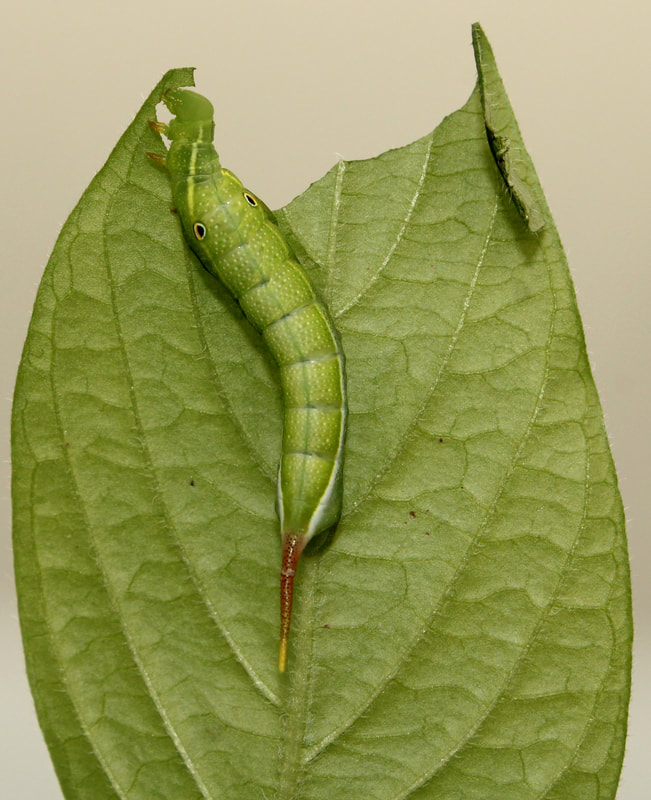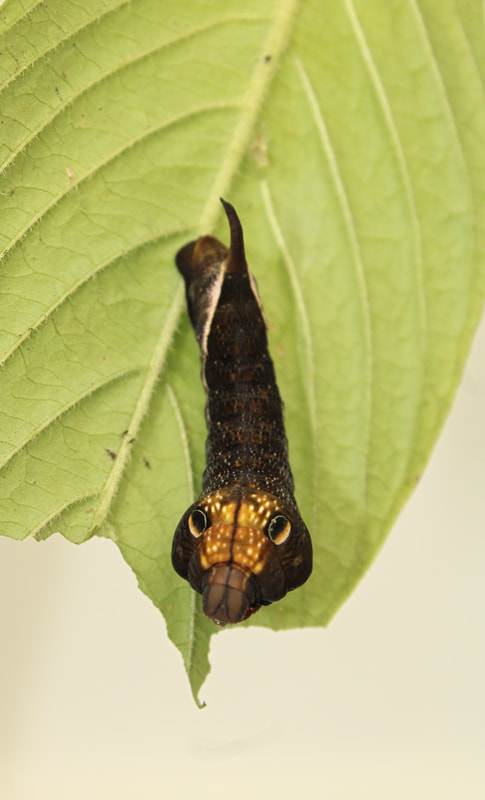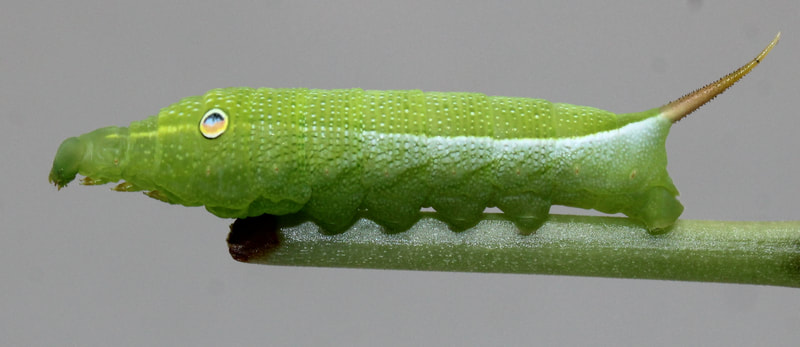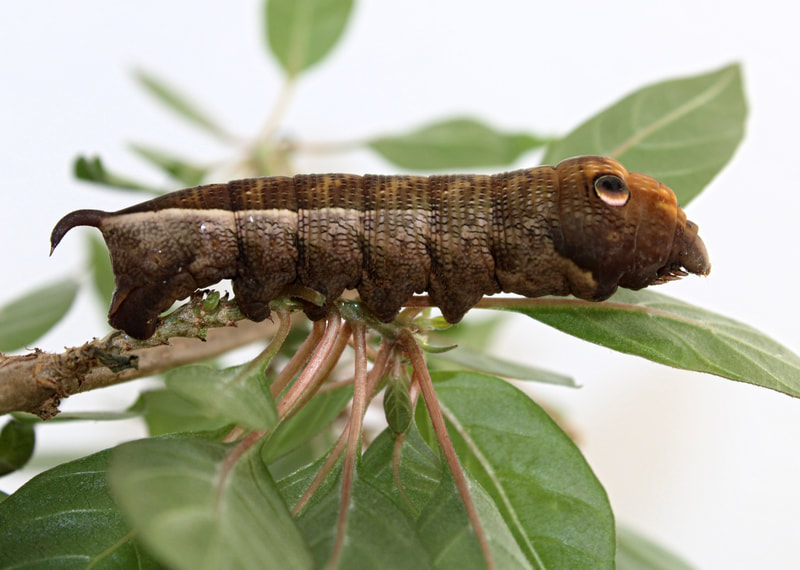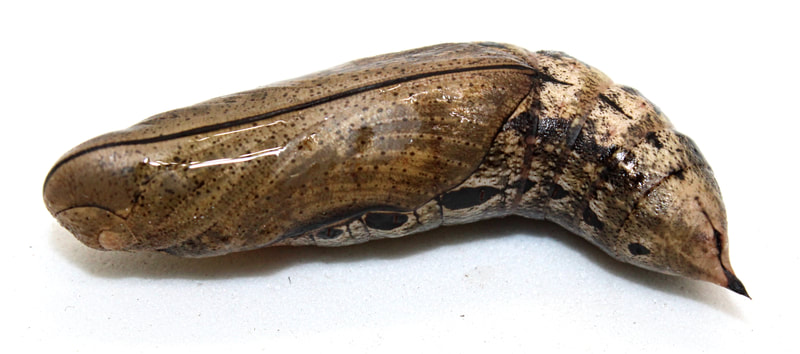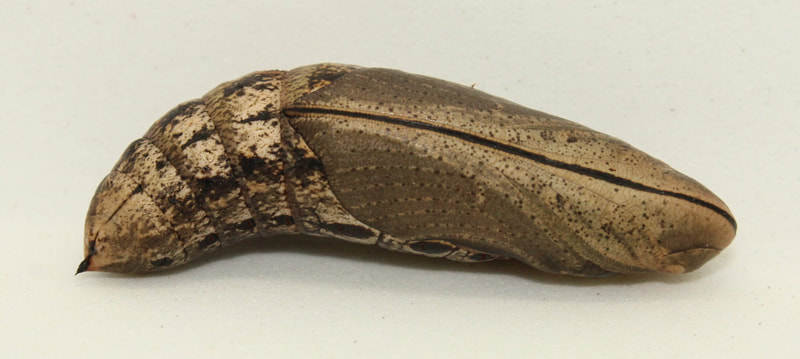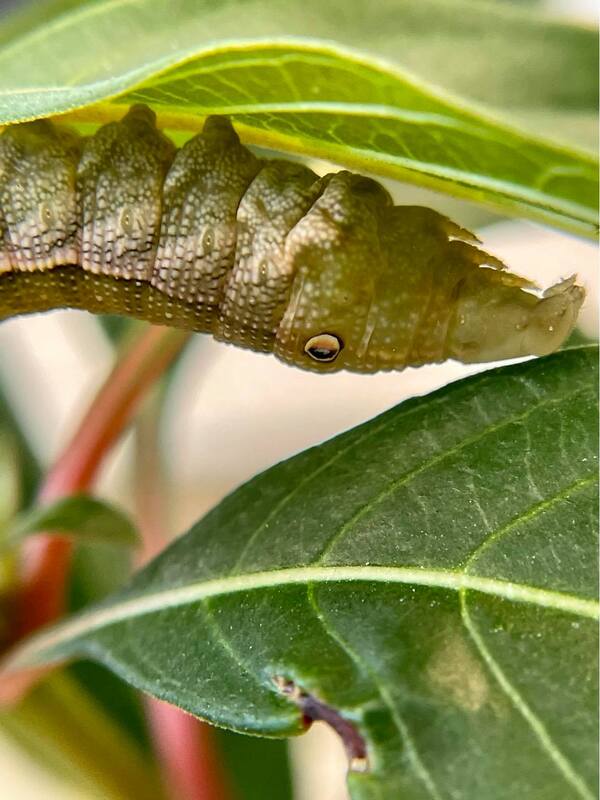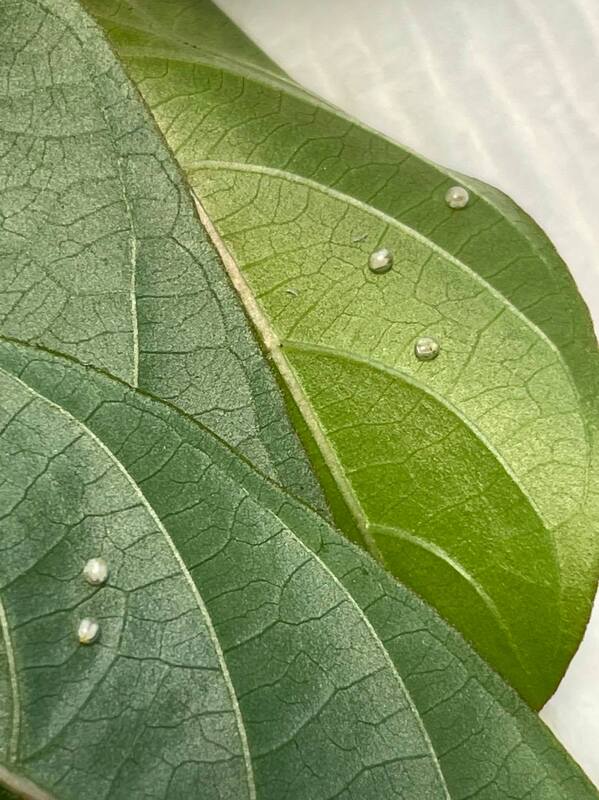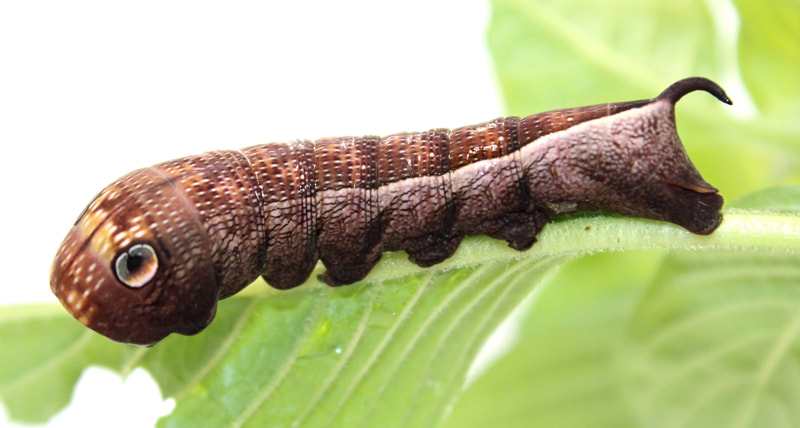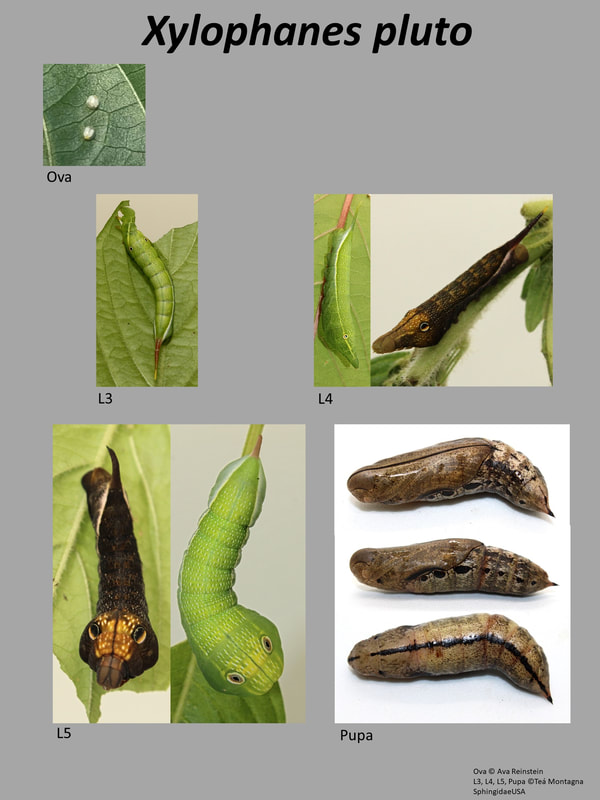|
Common Name: Pluto Sphinx
Ecology and Life History: This species is on the wing year-round in South Florida and Texas. This species is attracted to light, showing up in some numbers when in the right area. This species can also be seen taking nectar from flowers at dusk. Both sexes look similar, with females having a slightly rounder abdomen. Eggs are laid on the surfaces of hostplant leaves, often near the tips. They are usually laid near the tops of the plants and sometimes in the flowers. Larvae feed on the undersides of leaves, hiding there during the day. When distrubed, the larvae of this species retracts it’s thoracic segments into the first few abdominal segments and resembles a snake. Adults are extremely docile and tend not to fly away when disturbed, but rather drop to the ground or flit to a nearby plant. As a larva, this species has a green form and a brown form. Adults look the same across their range. Habitat and Searching for Larvae: Larvae are most commonly encountered on either Pentas lanceolaria or Hamelia patens. There are other hostplants, but these are most often used. This larva is almost never out of reach, especially because their most common hostplants are grown in bush form. The younger instars tend to feed toward the tops of the plants, resting along the undersides of the leaves during the day. Older larvae may be more in the middle or base of plants, retreating toward the center of the plant during the day. Third instar and older larvae rest in their defensive posture (thoracic segments extended and not attached to the plant) on the undersides of leaves, often half-eaten leaves. This is a moth most commonly encountered in urban and suburban yards, butterfly gardens, and landscaped areas where Pentas is planted. It does have other hostplants which can be found in more wild areas, but this moth and it’s cousin Xylophanes tersa has greatly benefited from the urban plantings of Hamelia and Pentas. Larvae can be found year-round in Florida and Texas. The green form of this larva does fluoresce under UV light. It is most easy to locate larvae during the nighttime when they are actively feeding. Alternatively, some larger instar larvae rest under half-eaten leaves and are then easily located during the day. Eggs are equally easy to find by searching the tops of plants and tips of leaves. Rearing Notes: This species lays eggs readily in captivity, especially when given access to a potted hostplant. Breeding in captivity has proven difficult, despite feeding adults twice daily, no mating occurred (1). In captivity, larvae do best on potted hostplants of either Pentas or Hamelia patens. Other hostplants including Chiococca and Erythroxylon and can be used. When reared on a potted hostplant, they do not seem to mind being crowded (8-10 per plant), nor do they seem to suffer any large outbreaks of disease. When reared in tupperware, care should be taken to avoid excessive humidity (some is tolerated). In tupperware, larvae should not be crowded, with only 1-2 larvae per container. Sleeving is likely an excellent way to rear this species. Care should be taken with final instars as they leave the plant and spin a loose cocoon in dead leaves/topsoil. If they are not removed from the sleeve and given suitable pupation sites, they will die. Pupation is easily achieved using the paper towel method (outlined in the General Information tab), or by allowing the larva to pupate in dried leaves/flowers. Adults eclose after dusk and remain fairly inactive until the next evening. Host plants: Click here to load this Caspio Cloud Database
Cloud Database by Caspio |
Adult Description: This is a very distinctive moth. The forewing length is 33-39mm (2). It is green in color with various white speckling, mostly in the costal area and apex of the forewing. There is a distinct area in the middle of each forewing that is separated by two curved lines. The area inside the lines is generally more whitish than the surrounding areas. The thorax and abdomen of this moth are both green. The abdomen has several white dots down the length. The hindwings are yellow-orange, with a black area on the upper edge of the hindwing. The lower margin of the hindwing are darker, but not black.
Larval Description: L1: The first instar is a small green hornworm. It is not very distinctive and is easily confused with Xylophanes tersa at this stage. L3: Upon reaching the third instar, the distinctive eyespots on the first abdominal segment are revealed. At this stage, the horn is red in color. L4: The larva can be green or brown with two distinctive thoracic eyespots. It has all the coloration of the final instar. The horn is red in the green form, or brown in the brown form and hooks downward. L5: The larva is generally green or brown in color. There is a distinctive set of eyespots on the thoracic segments. The rest of the larva lacks eyespots, which separates this species from Xylophanes tersa. The horn is either light orange or brown depending on the color form of the larva and hooks sharply down. |
The gallery to the left contains photos of Xylophanes pluto adults. If you have a photo that you would like to submit to us, please contact us.
The gallery to the right contains photos of Xylophanes pluto larval and pupal stages. If you have a photo that you would like to submit to us, please contact us.
The gallery to the right contains photos of Xylophanes pluto larval and pupal stages. If you have a photo that you would like to submit to us, please contact us.
|
|

